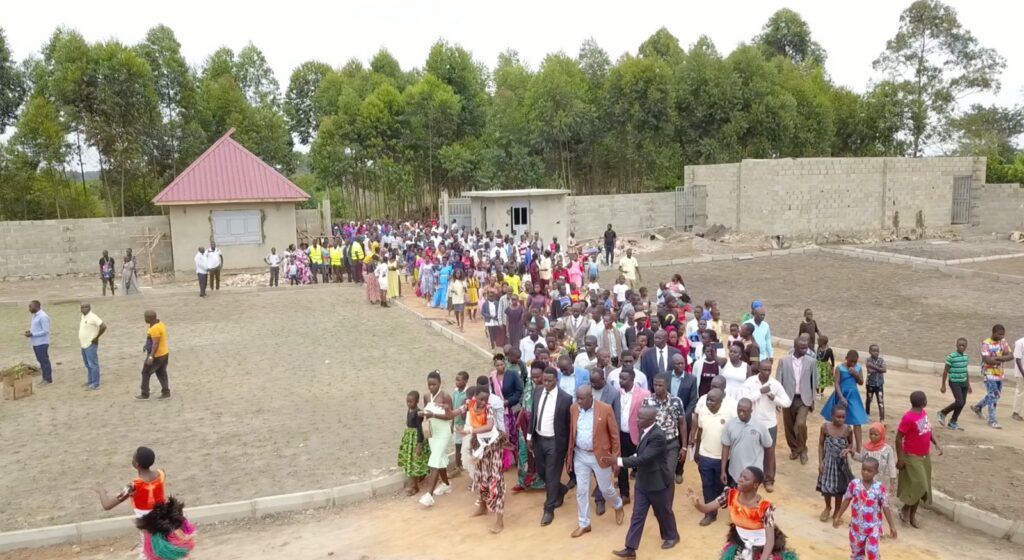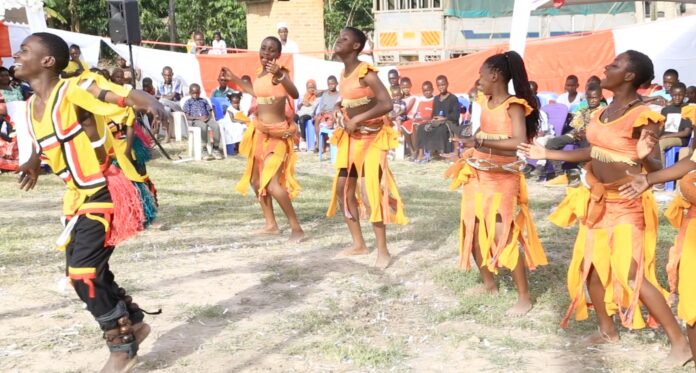( ENSPIRE Community Spotlight ) How A Colorado Initiative Helped A Uganda Community Control Their Economics and Education
ENSPIRE Contributor: Petra Wolf
In rural Kasasa, Uganda, The Tat Sat Community Academy (TaSKA) educates students in the community and beyond. The school opened in February 2023 with 57 students who live at the school and 63 from the community who live nearby. To help pay the school fees, families can process and sell their maize at the project’s local, community-owned, maize mill. The community partnered with The InteRoots Initiative to develop the project. InteRoots is a Denver, Colorado-based nonprofit working both domestically and internationally on projects that are sustainable to local communities.
So far, 100 tons of maize have been sold, totaling over $25,000, which helps families subsidize their children’s education. “This is an innovative and critical piece of the project in Kasasa,” says Scott Frank, co-founder of The InteRoots Initiative. “We are excited to see the maize mill helping students and families pay school fees, which are already well below average when compared to other schools in the region, so students can reach their full potential.” ENSPIRE promotes empowering communities through education and community-owned business.

ENSPIRE spoke with one of the founders about the past of InteRoots and the future of the initiative.
What led to the founding of the InteRoots Initative?
The InteRoots Initiative was founded by M. Scott Frank and Ronald Kibirige in 2018 to catalyze community efforts to identify, create and construct solutions at the local level. As a nonprofit, it works to support and partner with communities and organizations making lasting change through locally-led sustainable initiatives.
What got the initiative interested in this specific location?
The InteRoots Initiative already had a relationship with the community of Kasasa through the groundbreaking work of co-founder Ronald Kibirge. The Kasasa community came to InteRoots after they identified needs and a vision for the transformation of their community, and a partnership was created.
Are there any sources of funding other than the Maize Mill?
Besides the sustainable model of the maize mill, The InteRoots Initiative has invested more than $350,000 USD to jumpstart the Tat Sat Community Academy and associated projects. We envision the Kasasa community to be self-sustaining with these projects in the coming years. The maize mill is one way that will be possible. Other sources of income planned for the project are student tuition (set by the community board to be affordable for all), financial services through the SACCO, income generated through medical services at a planned clinic, and revenue from arts programming/performances and space rental at the Institute of Indigenous Culture and Performing Arts (ICPA).
What has been the measurable impact of this initiative?
At The Tat Sat Community Academy in rural Kasasa, there are 57 students who live at the school and 63 from the community who live nearby. The school, which opened in February 2023, enrolled 64 girls and 56 boys. Over the next three years, enrollment will grow to over 500 students, with at least 300 boarded on the grounds.
The total number of member accounts held by community members in the SaCCO is 294 as of March 26, 2023. All employees of the school, the maize mill, and the SaCCO itself have agreed to not only have accounts in the SaCCO but to make a monthly minimum deposit of UGX 30,000. Under this structure, the community can reinvest since members can then access financing through the SaCCO for business ventures, education, or other investments. In its first harvest season, the maize mill processed 14,000 Kg of grain from Kasasa and nearby communities and invested in a 10-acre maize growing project within Kasasa for the next harvest season in July 2023. Program leaders expect to process no less than 50,000 Kg of grain within the next season. The maize mill will have purchased its own truck by the end of the year to collect maize grain from community growers, as well as deliver maize flour for sale at the market in the region and in the capital where prices are more helpful, providing access to better returns for farmers and their families.
What are the future goals of this initiative?
The InteRoots Initiative hopes to catalyze other locally-led projects through funding opportunities and see more communities enact “roots up” projects that allow them to grow from within the community.
Does InteRoots Initiative serve communities outside of Kasasa or plan to?
InteRoots is currently working with partners developing projects in Atlanta, Georgia, in the U.S. as well as in the Four Corners Region of the U.S. More information will be available in the coming months.

Besides the school, the project has two other pillars to it: The Institute of Indigenous Cultures and Performing Arts, or ICPA, and a Savings and Credit Cooperative Organization, or SACCO. The ICPA will allow students and community members to keep traditional knowledge alive through music, dance, and other art forms. The SACCO, meanwhile, educates students and their families. These pillars all aim for the same goal of community revitalization.
Related Articles: Dance Instructor Transforms Students Lives Through Dance Therapy, Home Decor Company Turns COVID-19 Attention Towards Solving Hunger Awareness Problems in Africa to Support Their Artisans







